How to Identify At-Risk Alumni: The Role of Technology in Recovery Support
Discover how technology helps addiction treatment centers identify at-risk alumni early, improve outcomes, and prevent relapse through smarter outreach.
Discover how technology helps addiction treatment centers identify at-risk alumni early, improve outcomes, and prevent relapse through smarter outreach.

Relapse is rarely loud. It doesn’t typically kick down the door and announce itself right away. More often, it’s subtle. It begins as a missed text or a skipped alumni meeting, and eventually escalates into a full-blown slip. For alumni coordinators, the challenge is catching these subtle warning signs before it’s too late. But when you’re managing relationships with dozens, sometimes hundreds, of alumni, it’s an impossible task to do manually.
That’s where technology steps in—not as a replacement for human connection, but as a way to catch the quiet warning signs as early as possible. When done right, tech can transform your alumni outreach from a reactive fire drill into a proactive, preventative safety net. In this comprehensive guide, we dive into what it means to identify at-risk alumni members before it’s too late. We’ll cover:
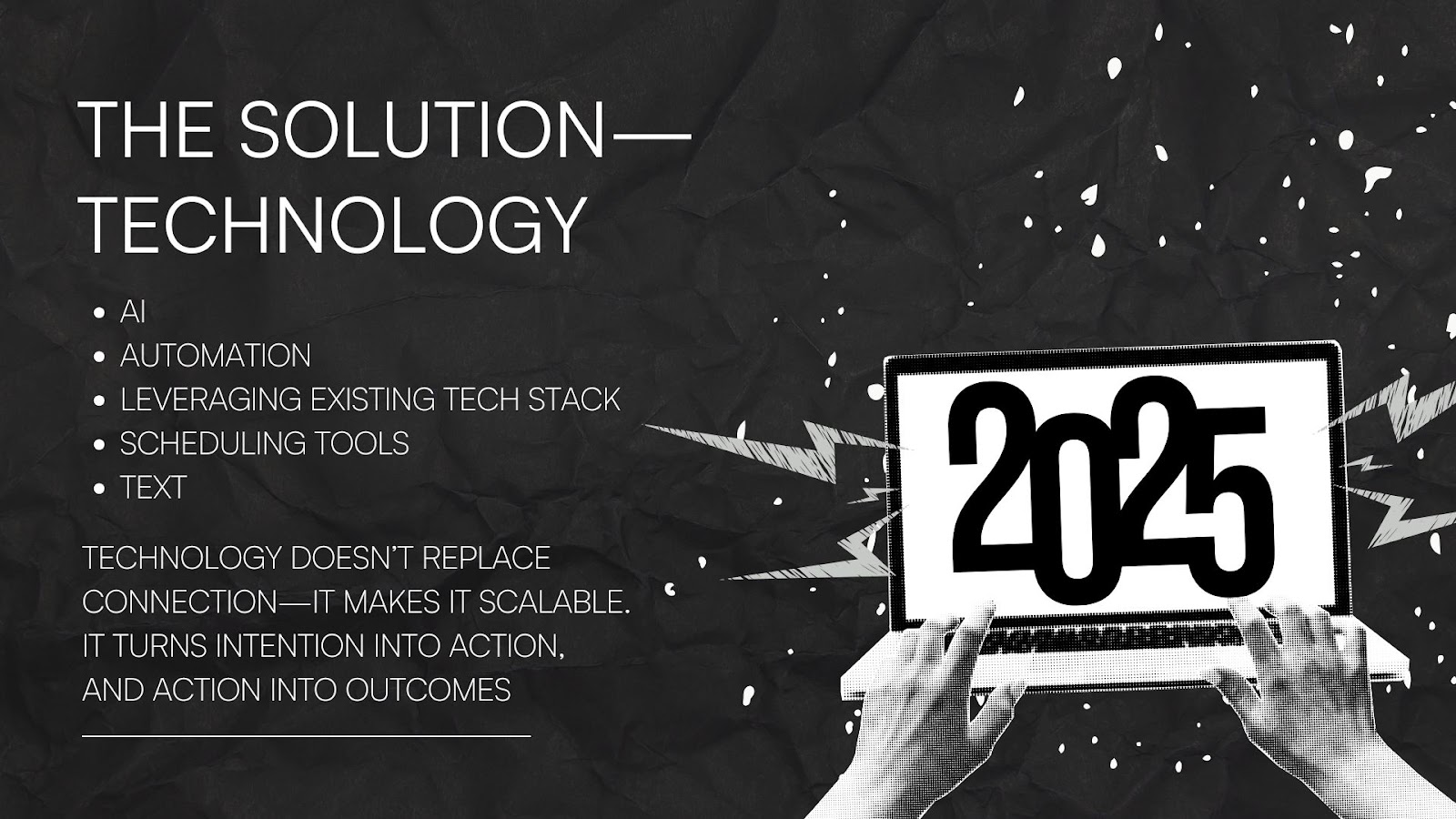
Encyrcle makes taking the guesswork out of alumni care simple. Our automated, text-based platform helps you spot at-risk alumni in real time, so you can show up when it matters most and scale alumni outreach without burning out your team.
Before we dive deeper into ways to spot at-risk alumni with tech-powered precision, we have to start with the basics—what does “at-risk” even mean? These risks aren’t always obvious. More often, they hide in subtle behavioral and emotional shifts that go unnoticed in traditional check-ins. Understanding what “at-risk” looks like, and how it can vary from person to person, is key to building outreach systems that actually work.
In alumni care, “at-risk” can mean many things. It might mean someone is close to relapse. It could also mean someone is emotionally overwhelmed, isolating, or disengaging from their support system. Not every alumni member who is at risk will end up using again, but many are on their way out the door without even realizing it.
It can be helpful to think of risk in three dimensions:
Recognizing these dimensions helps you build a system that doesn’t just react to crises, but anticipates them.
Several risk factors show up over and over in the alumni care world—and most of them aren’t shocking. What is shocking is how often they slip under the radar when you’re relying on outdated organizational systems.
Here’s what to look out for:
The goal here isn’t to hover or micromanage, but to keep a gentle, informed pulse on what your alumni are going through. That pulse is much easier to read when you’ve got smart, tech-driven systems listening for you.
Attempting to run a strong alumni program without the right tools is like trying to track a wildfire with a walkie-talkie. It’s outdated, reactive, and doesn’t give you the full picture. Many treatment centers still rely on spreadsheets, sticky notes, and overburdened inboxes to manage alumni outreach. While well-intentioned, these systems aren’t built for scale.
When you’re trying to track, support, and reengage dozens—or even hundreds—of alumni navigating life after treatment, the old way simply isn’t sustainable.
Let’s talk about what happens when those little outreach gaps become full-blown cracks in the system. These aren’t just administrative problems—they’re outcome problems. And that’s exactly why scalable, tech-powered solutions matter so much.
Here’s how modern, tech-driven alumni care systems make it easier to catch warning signs early and intervene effectively.
Collaborate with your clinical and alumni team to clarify:
This creates a clear, shared definition of “at-risk” that your team can rally around. Pull in insights from clinical staff and, if possible, alumni themselves. The more context you include, the more precise your system can be.
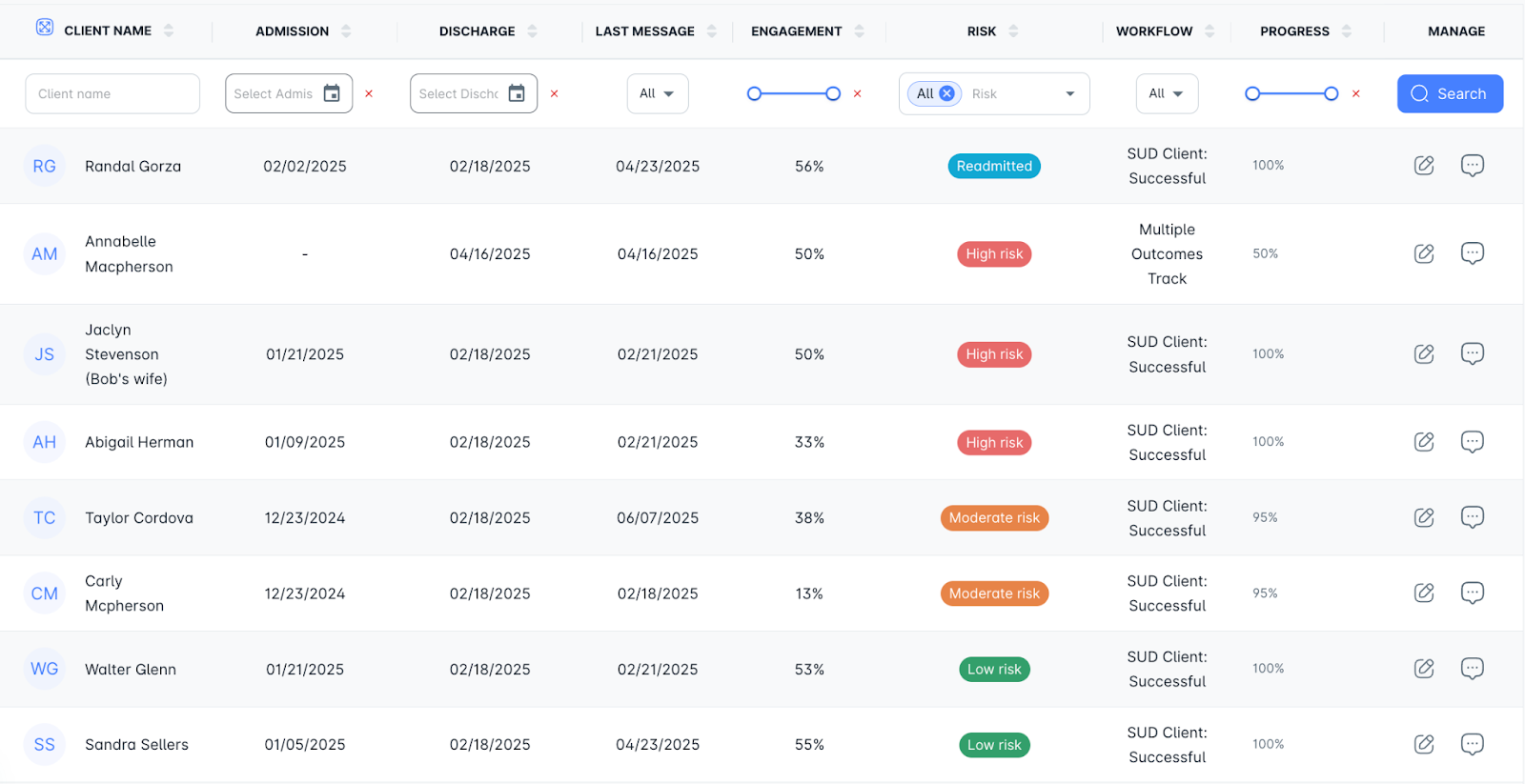
While the idea of calling every alumni member weekly for a friendly chat is well-intentioned, it’s simply not practical—especially as your program grows. Similarly, the notion of manually emailing every alumni and their support network is admirable in theory, but far from sustainable in practice. Text-based workflows are simply where it’s at… and for good reason.
Set up a consistent check-in cadence. We recommend weekly check-ins during the first 90 days post-treatment. Use casual, connection based messages that reflect your brand voice.
Schedule check-ins around key recovery milestones, anniversaries, or holidays, when alumni might feel the most vulnerable. When you automate the structure, you free up time to focus on the responses that need a real person behind them.
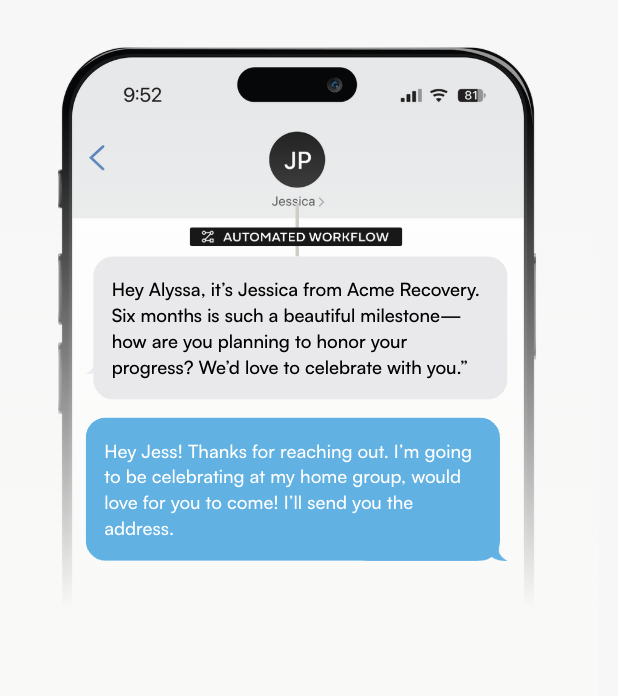
Here’s where your outreach strategy becomes more focused and effective. Once your workflows are in place you can zero in on alumni who may need additional support by surfacing clear risk level indicators—such as patterns of non-responsiveness or missed check-ins.
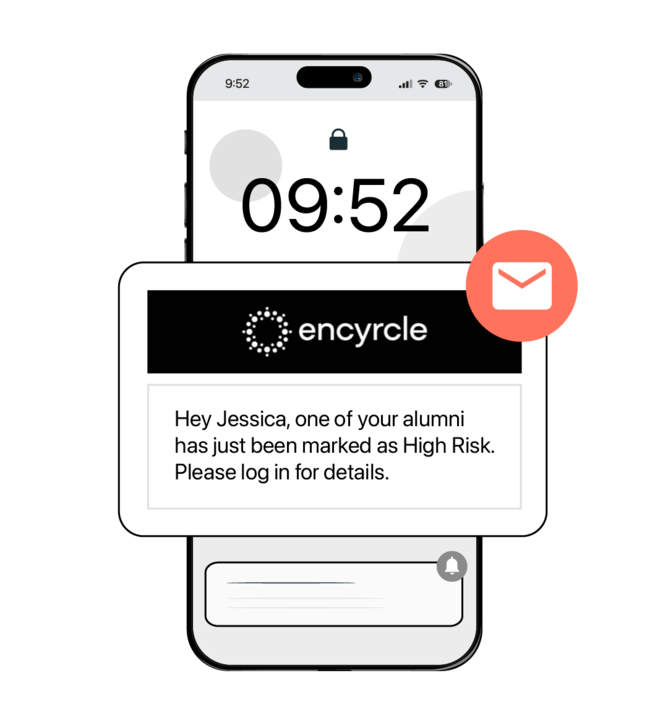
You can’t improve what you don’t measure. Once your outreach system is live, the real magic happens in the data. It’s not just about doing the work, it’s about understanding what’s working, what’s not, and where you can level up.
Start by looking at key engagement metrics:
This is your chance to fine-tune your program—not just with gut feelings, but with clear, measurable insights.
These metrics don’t just look good in reports, they tell a real story about how effectively your team is supporting alumni. And when you share that story with leadership, insurance providers, or accreditation bodies? You’re not just showing effort. you’re showing outcomes.
Over time, this data helps you refine your definition of “at-risk,” sharpen your alert criteria, and build a program that evolves alongside your alumni community. That’s how you move from reactive support to a truly proactive, results-driven alumni care model.
The most advanced and effective automated alumni software in the world doesn’t matter if alumni don't feel seen, heard, and supported. While technology can track trends and automate check-ins, it’s your team’s empathy and personal outreach that anchors alumni in recovery. Think of tech as your support system—not a substitute for connection. Technology can spot disengagement early, automate your outreach, and help you prioritize who needs you most. But it’s the human voice on the other end—the familiar name, the thoughtful, personalized check-in, the “Hey, we’re here for you”—that keeps alumni connected to recovery.
So think of technology not as a shortcut, but as a bridge. A tool that gives you time, insight, and focus to show up for the moments that matter most. Because recovery isn’t built on perfectly-timed data points. It’s built on people. And the more you can focus on them, the better your program will be.
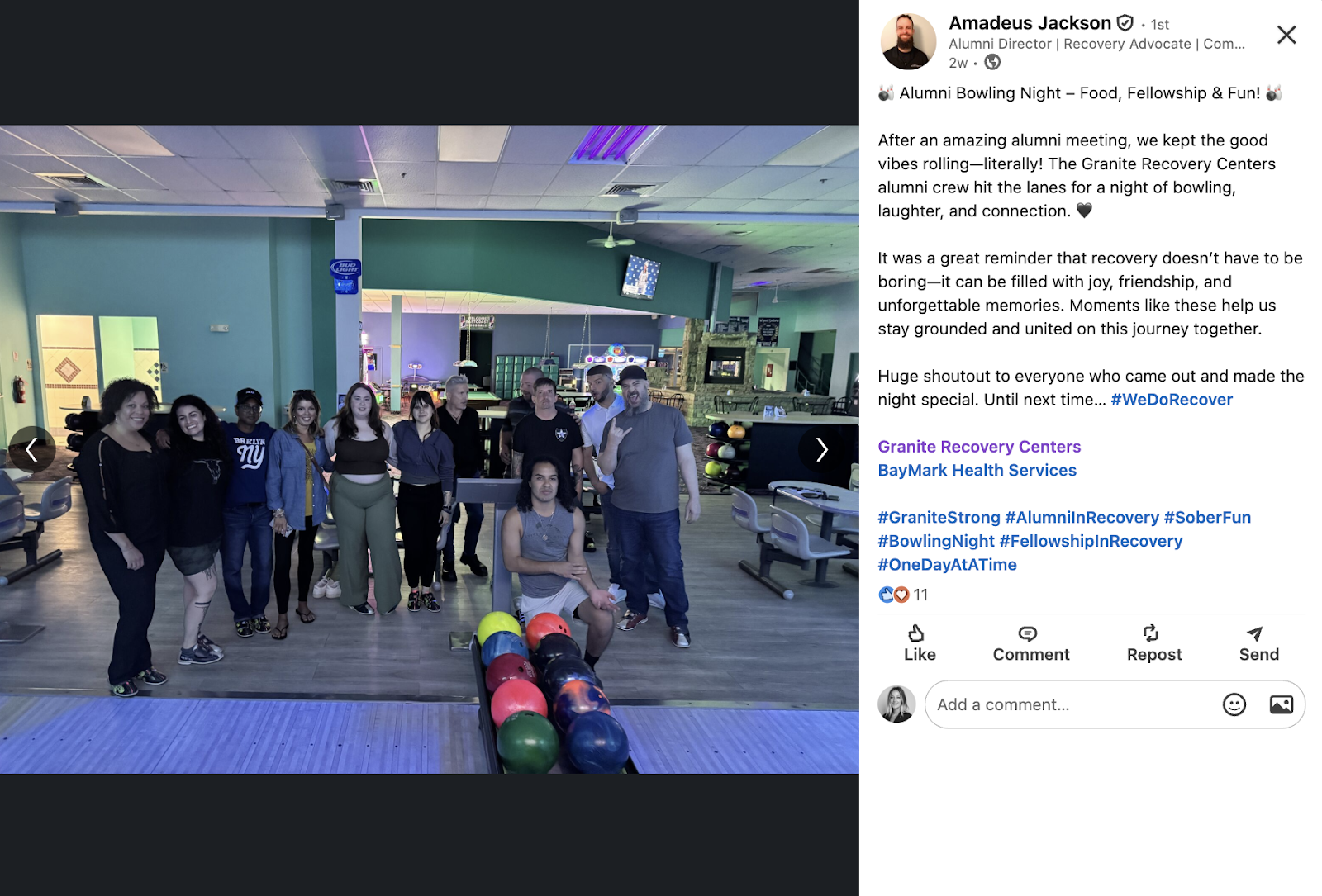
At-risk alumni can be identified early—and it doesn't have to rely solely on manual effort. With the right systems in place, your alumni program can move from reactive outreach to a proactive, consistent, and compassionate model of support. Technology gives you visibility, automation gives you consistency, and your team brings the connection. Together, that trio can reduce relapse, improve outcomes, and build alumni programs that support long-term recovery.
Want to see how it all works in real time? Request a demo with Encyrcle and discover how our platform can help you spot at-risk alumni, boost engagement, and streamline your outreach, without burning out your team. We look forward to talking to you and answering any additional questions you might have.